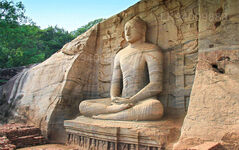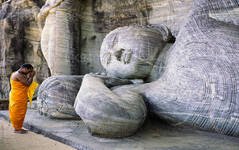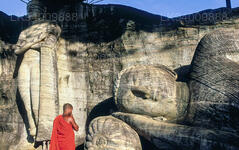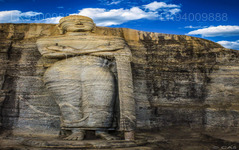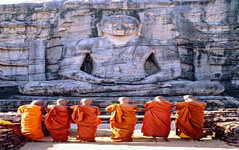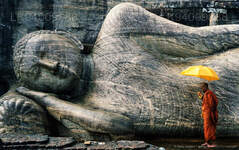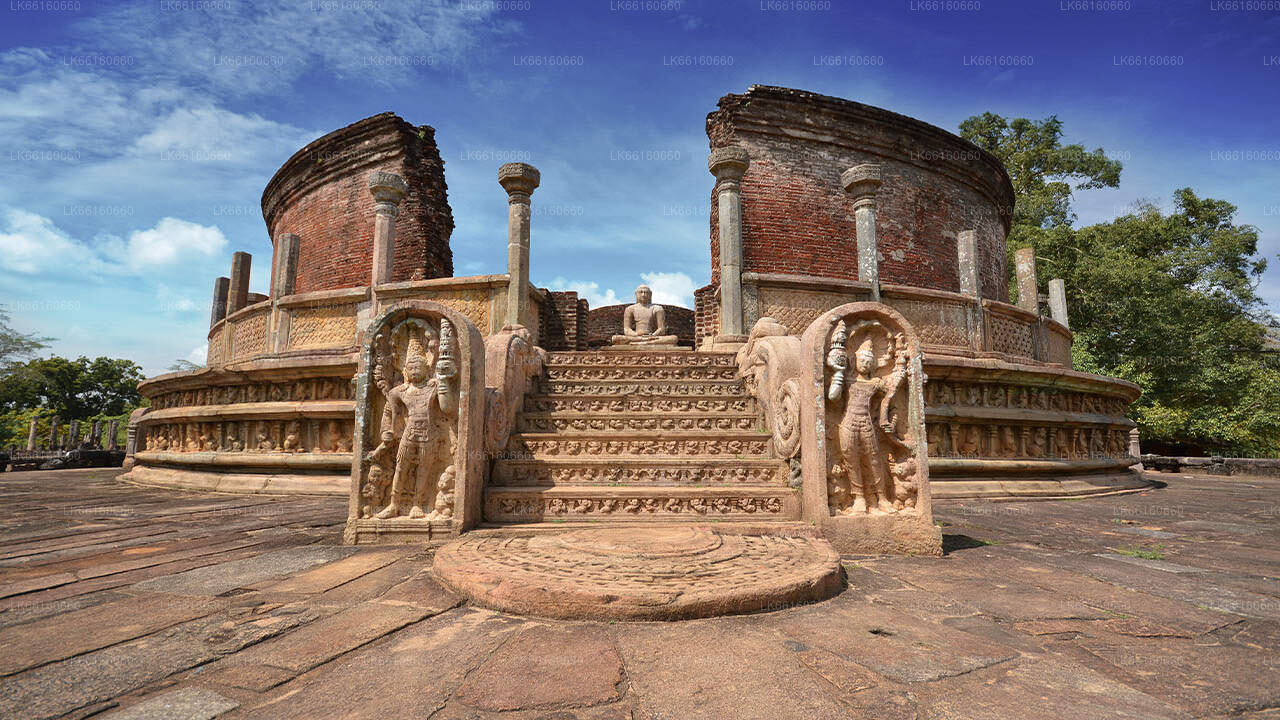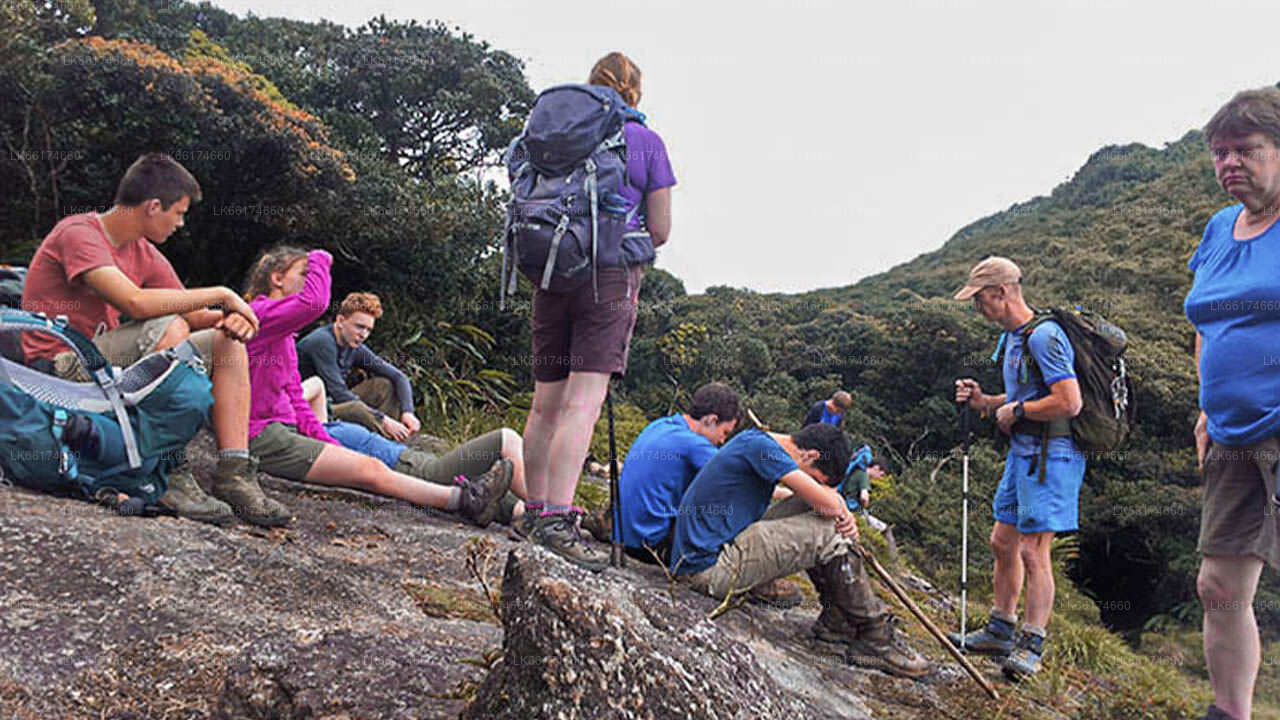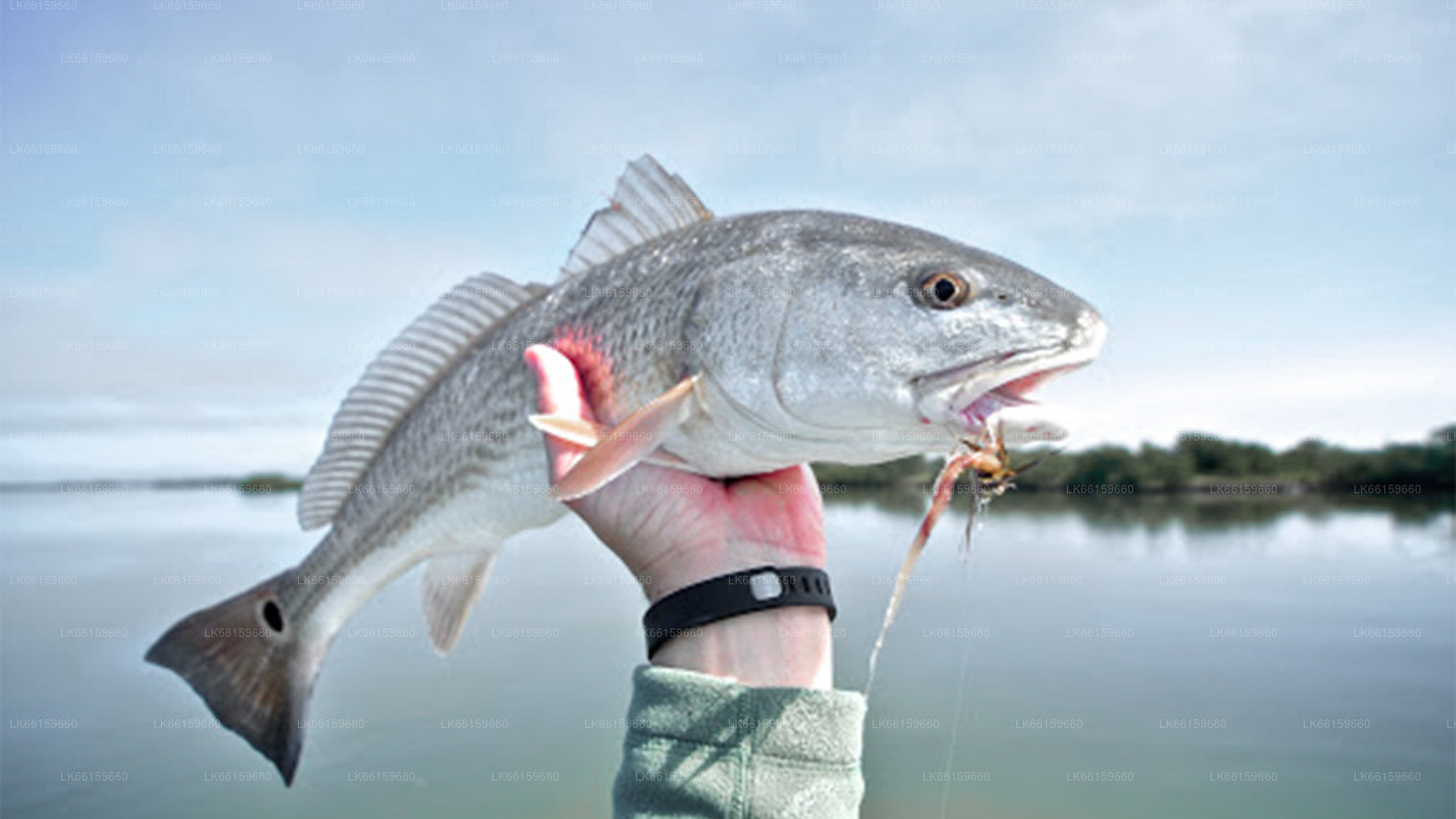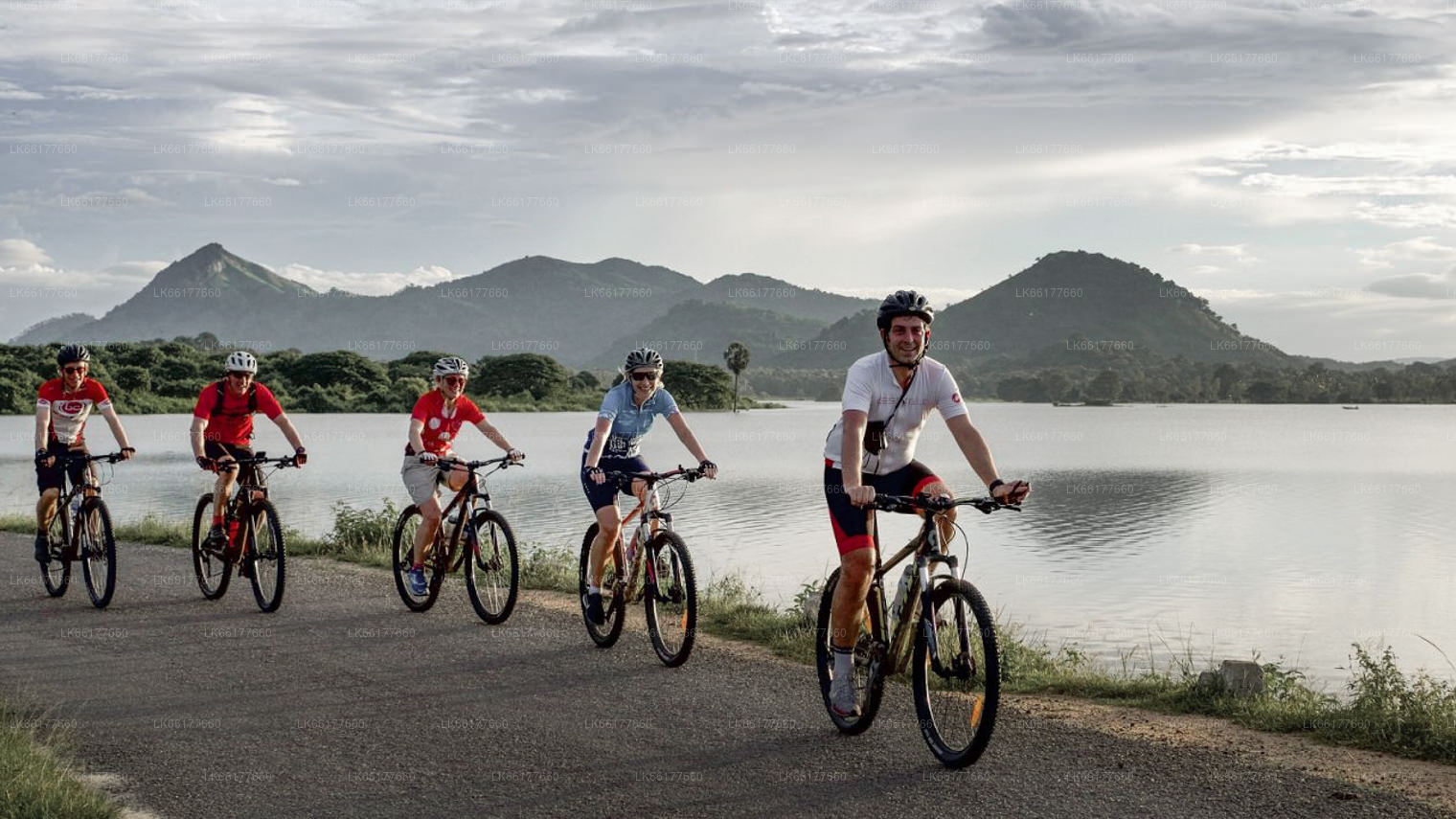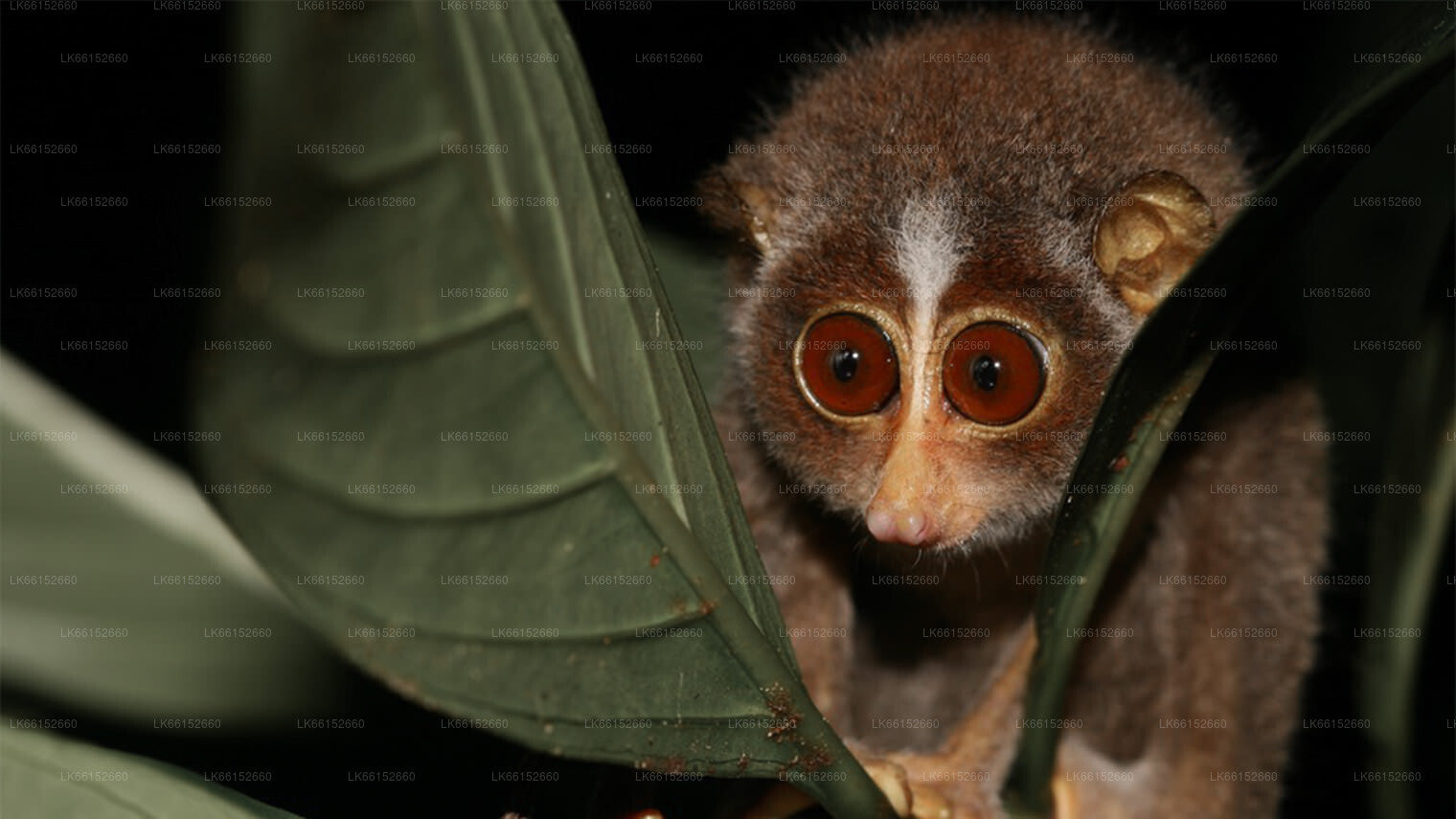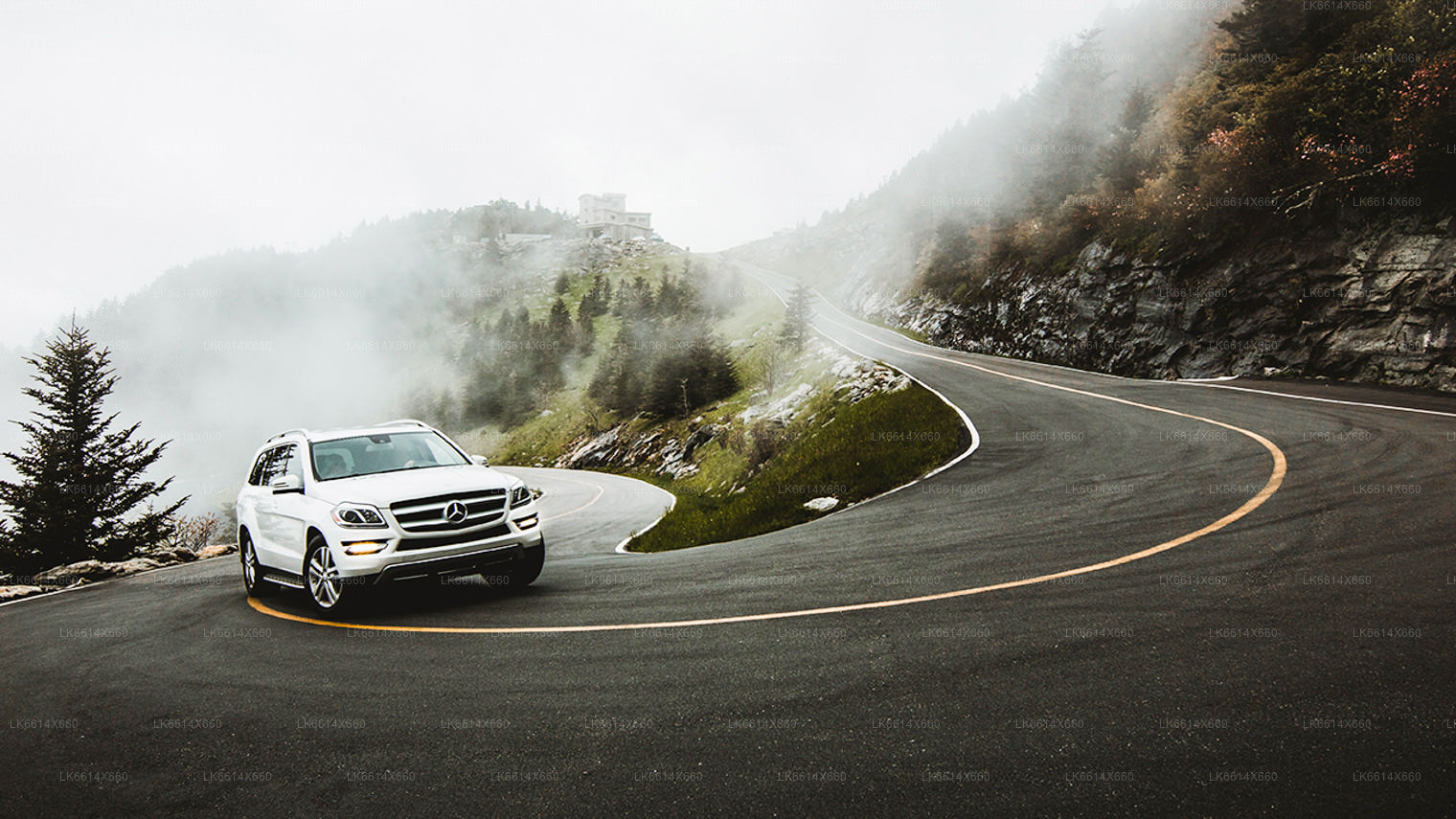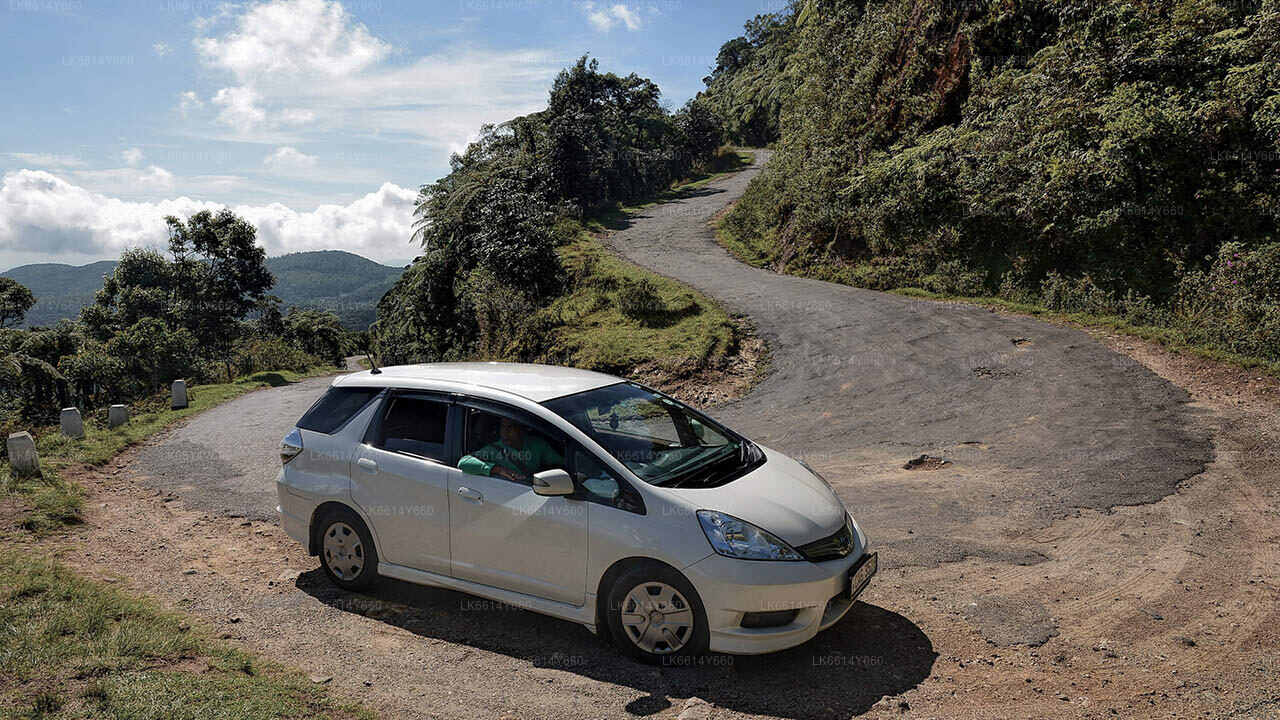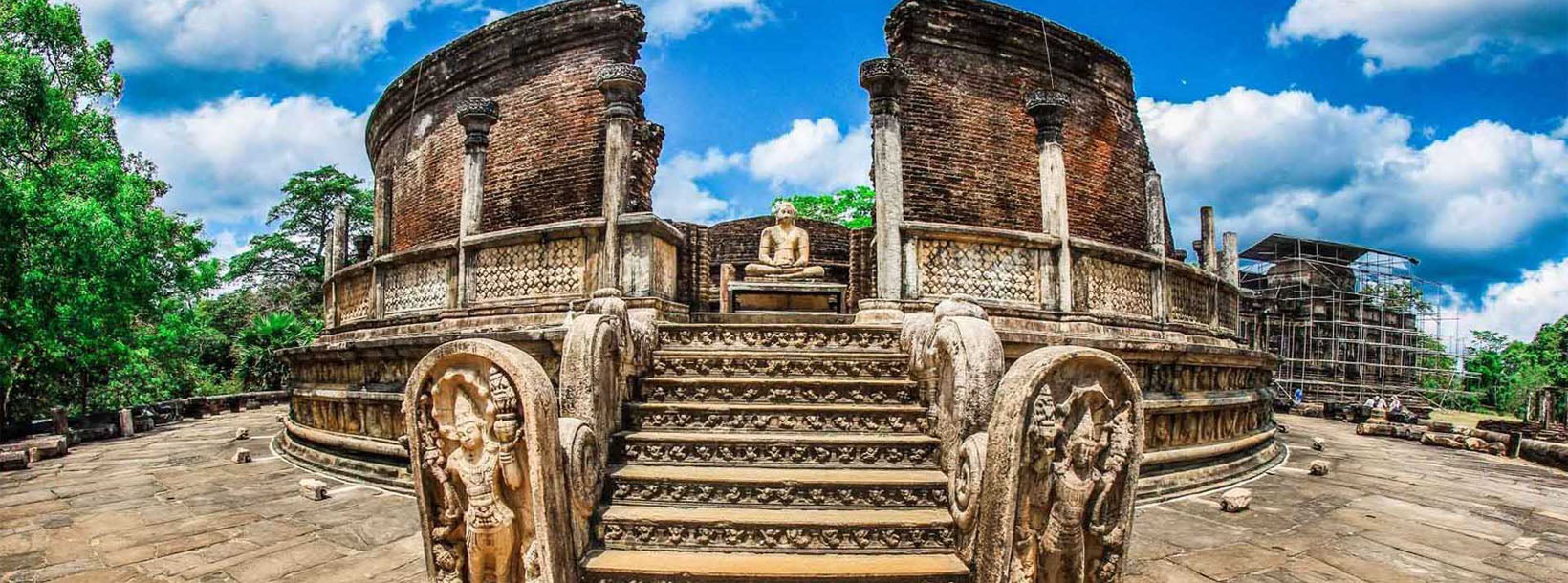
Polonnaruwa By
Polonnaruwa, a UNESCO World Heritage Site in Sri Lanka, was the country's medieval capital (11th-13th century). Renowned for its well-preserved ruins, including the iconic Gal Vihara statues, it showcases impressive architecture, reflecting the grandeur of the ancient Sinhalese civilization.
Gal Vihara (ගල් විහාරය)
Gal Vihara (Sinhala: stone temple), Buddhist Temple at (UNESCO World Heritage Site) at Polonnaruwa, Sri Lanka is the most perfect specimen of Buddha statue hewn out of solid stone. Crafted during the reign of King Parakrabahu (1153-1186 A.C), Gal Vihara statues are still incomplete preservation with their irresistible charm and sublimity. It is undeniable that the sculptors of Gal Vihara were of greater skill and expertise in the art of stone sculpture in Sri Lanka. The images at Gal Vihara have brought about a higher level of awakening in the observers with respect to Buddhist art in Sri Lanka.
Gal Vihara at Polonnaruwa in Sri Lanka known as “The Northern Temple” at the beginning of its history, is a cave complex, about 27 meters in length and 10 meters in height at the center and sloping towards the ends, with sculptures carved on the solid rock in four shrines.
Gal Vihara, like numerous other Buddhist shrines of Sri Lanka, is a shrine of Theravada Buddhism. Then again Gal Vihara testifies to the influence of Mahayana Buddhism during the 12th century.
Caves of Gal Vihara
Gal Vihara consists of four cave shrines with sculptures hallowed out of granite rock.Caves from left to right are
(a) Cave of Vijjadharas,
(b) Excavated Cave,
(c) Cave of Standing Image and
(d) Cave of Reclining Image.
Between the Excavated Cave and the Cave of Standing Image is an inscription. In front of the Excavated Cave are remains of a pavilion.
Though the brick walls of the four shrines had collapsed centuries ago, the foundations remain giving evidence that each statue was separated from one another.
Cave of Vijjadharas
The cave consists of a main image of Buddha sculpted out of the rock boulder, having carved round and four small bas relief carvings of Buddha. The small bas relief statues are carved on either side, above the head of the main image.
The main image depicts the chief of meditative Buddhas titled Dharmadhatu, Adi Buddha, Vairocana, and Vajrasattva.
The four small images of the Buddha in Dhayani Mudra represent the four directions of the universe.
All five images are of Dhyana Mudra or meditative posture is believed to depict the all-embracing Body of Law (Dharmakaya).
The Excavated Cave
The Excavated cave too houses an image of Buddha in dhayana mudra or meditative attitude sculpted out of the rock boulder. The image herein is smaller than the main image at Vijjadhara Cave.
The Cave of Standing Image
The Buddha statue rising to 7 meters in height herein, stands on a lotus pedestal called Padmasana. Padmasana signifies that Buddha is a transcendental being.
The Cave of Standing image: Ananda or Buddha
The standing statue is at the head of the massive reclining Buddha. The standing statue’s placing of arms across the breast has caused a controversy as to the identity of the statue. The early archeologists believed the statue was that of Ananda, an attendant disciple of Buddha grieving at the passing away of Buddha.
However, the subsequent studies at Gal Vihara on the features of the statue have established that the standing image is that of Buddha and not of his disciple Ananda.
Firstly, since the standing image was once contained in its own shrine room, separated by brick walls it has no relevance to the reclining image. Though the brick walls of the three caves had collapsed several centuries ago, the foundations can still be seen.
Secondly, the right-ward curled clusters of hair are only found on the images of the Buddha and not on the images of his disciples in the same period.
Thirdly, the Buddhist artists never offered the Lotus throne or Padmasana to disciples Fourthly, the ears of the statue herein are elongated. Of all the statues of Buddha, his disciples, and deities, only the images of Buddhas consist of elongated ears.
The Cave of Reclining Image
The reclining image of Buddha at this cave is 14 meters long. In spite of the colossal proportions, the statue carries supreme grace and serenity.
The Cave of Reclining Image: Reclining posture Vs. Parinirvana posture
The argument over the massive statue with respect to Buddha’s posture of passing away and the posture of reclining was won over by the proponents who established that the great statue at this cave is a reclining image. Firstly herein the Buddha statue with a lotus symbol in the palms and feet is sculpted in the posture called Simhaseyya: the pose of a sleeping lion. The lion sleeps resting its head on its right paw.
Secondly, in Sri Lanka, the theme of passing away wasn’t taken as a popular feature in Buddhist art. Thirdly the images that regularly accompany the images of Buddha’s passing away, i.e.images of disciples, sal trees, and flowers aren’t present at this statue.
Om Polonnaruwa-distriktet
Polonnaruwa er den næststørste by i den nordlige centrale provins i Sri Lanka. Den gamle by Polonnaruwa er blevet erklæret som et verdensarvssted af UNESCO. Polonnaruwa har en lang historie med erobringer og kampe og udgør med rette det tredje element i den kulturelle trekant. Polonnaruwa, der ligger omkring 140 km nordøst for Kandy, tilbyder timevis af endeløs fornøjelse for historie- og kulturelskere, da der er mange betydningsfulde seværdigheder.
Mange af de fysiske ruiner, der står i dag, tilskrives Kong Parakrama Bahu I, som brugte mange kongelige ressourcer på byplanlægning, herunder parker, bygningsværker, kunstvandingssystemer og så videre. Perioden under hans regeringstid betragtes som en guldalder, hvor kongeriget trivedes og havde fremgang under en visionær hersker. Parakrama Samudra er en gigantisk tank og opkaldt efter dens beskytter. Det populære kongelige palads, audienshallen omgivet af smukt udskårne stenelefanter og badebassinet afspejler datidens overlegne ingeniørmæssige evner.
Om Nord-Centralprovinsen
North Central Province, som er den største provins i landet, dækker 16% af landets samlede landareal. North Central Province består af to distrikter kaldet Polonnaruwa og Anuradhapure. Anuradhapura er det største distrikt i Sri Lanka. Dets areal er 7.128 km².
North Central Province har adskillige potentialer for investorer til at starte deres virksomheder, især landbrug, agrobaserede industrier og husdyrsektoren. Mere end 65% af North Central Provinces befolkning er afhængig af basal landbrug og agrobaserede industrier. NCP kaldes også "Wew Bendi Rajje", fordi der er mere end 3.000 mellemstore og store tanke placeret i provinsen. Sri maha bodiya, Ruwanweli seya, Thuparama dageba, Abayagiri Monastry, Polonnaruwa Rankot wehera og Lankathilake er bange.

